Exploring the Aesthetic Landscape of Dubai's Real Estate

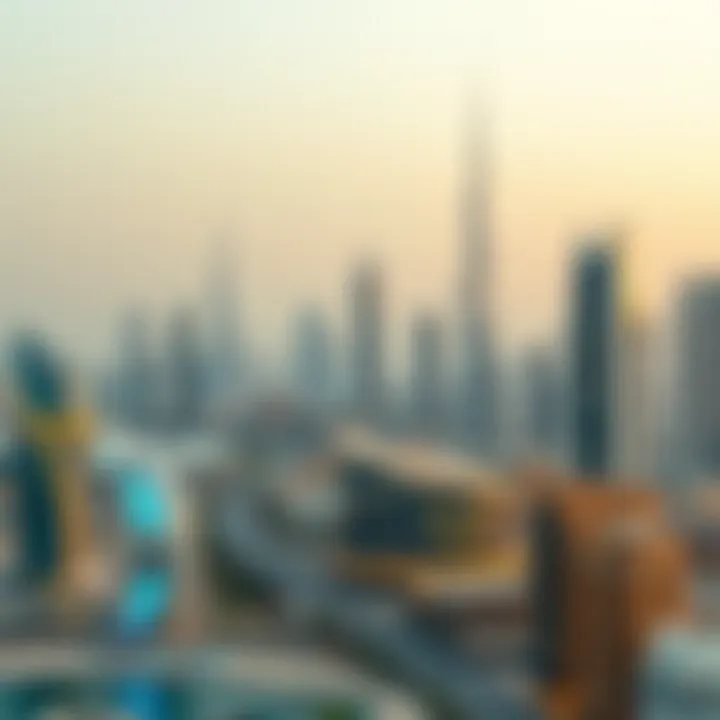
Intro
Diving into the vibrant real estate scene of Dubai is like stepping into a vast gallery of aesthetic expressions. The city, renowned for its architectural marvels and urban planning innovation, offers a unique blending of tradition and modernity that captures the essence of a global metropolis. Each structure tells a story, and these stories are layered with cultural influences, design philosophies, and global trends that shape the residential landscape.
Dubai’s property market is not merely about buying and selling real estate; it involves understanding the visual and functional aspects that elevate the value of properties. Aesthetic considerations here go beyond superficial beauty; they reflect the city's identity and dynamism.
This article aims to dissect these layers of aesthetics and provides critical insights into the interplay of these elements in shaping property values. From the towering skyscrapers to intricate urban designs, the narrative will guide potential buyers, investors, and real estate professionals through the nuances of aesthetics and the essentials for navigating this enticing market.
Market Insights
Current Trends in Dubai Real Estate
The Dubai real estate market experiences a continual ebb and flow, with trends often reflecting broader economic indicators and cultural nuances. Currently, there is a significant push towards sustainable living spaces, merging luxury with eco-friendly designs. Properties that embrace green architecture not only stand out in the market but also cater to an increasingly environmentally conscious audience. The introduction of biodynamic architecture has seen buildings adorned with greenery—balconies that mimic vertical gardens or rooftops that resemble urban oases.
Additionally, technology plays a crucial role. Smart homes are no longer a novelty but rather an expectation in Dubai’s upscale segments. Systems that enhance security, comfort, and energy efficiency are highly sought after.
Investors are particularly keen on properties that blend these aesthetic and technological features, as they often promise higher returns in the competitive market. According to recent studies from Dubai Land Department, this combination can lead to 10-20% increases in property values.
Economic Factors Affecting Property Prices
The fluctuations in Dubai’s property prices closely mirror economic conditions both regionally and globally. Significant events such as the Expo 2020 have bolstered the sector, with many projects seeing renewed interest. Yet, beyond major events, factors such as oil price fluctuations and geopolitical stability play pivotal roles.
Currently, with oil prices stabilizing, there's an optimistic outlook on investments. Leading economies around the globe have recently taken interest in Dubai as a hub for business and leisure, which has further contributed to rising property values. Potential buyers need to be savvy, monitoring market reports and economic forecasts while aligning with their financial capabilities.
Buying and Investing Tips
Essential Steps for First-Time Buyers
For first-time buyers, navigating Dubai’s real estate landscape can be daunting. Here’s a straightforward guide to keep in mind:
- Research: Start with a thorough understanding of the market trends, particularly focusing on areas that resonate with your personal and investment goals.
- Engage Real Estate Professionals: Working with reputable agents can help streamline the process. They have in-depth knowledge and access to exclusive listings.
- Visit Properties: Virtual tours are available, but there’s nothing like the feel of visiting a property in person.
- Evaluate Amenities: Look for properties that offer community features—pools, gyms, parks—these add aesthetic and functional value.
- Understand Legalities: Familiarizing yourself with property laws in Dubai is critical. Ensure all documentation is in order and that you understand the procedures involved.
Financing Options and Investment Strategies
When it comes to financing, potential buyers can explore different options:
- Bank Loans: Many banks in Dubai offer financing solutions with varying interest rates and terms.
- Developer Financing: Some developers provide in-house financing packages, which can be beneficial.
- Cash Purchases: If viable, purchasing a property outright can provide an edge—saving costs on interest and negotiations.
Investors must also explore strategies such as flipping properties, renting out units, or waiting for capital appreciation, which can be influenced by aesthetic appeal. Paying attention to the integration of design and functionality can guide investors toward higher yields.
"In Dubai, aesthetics plays a pivotal role; it is not just about the look but the feeling it evokes and the lifestyle it supports."
Ultimately, understanding the aesthetic landscape of Dubai property will not only work in your favor as a buyer or investor but will also enrich your experience within this beautiful city.
Understanding Aesthetic Appeal in Real Estate
When one steps into the realm of real estate, particularly in a place as vibrant as Dubai, understanding aesthetic appeal becomes paramount. A property’s visual charm isn’t merely skin deep; it influences perceptions, discussions, and even investment decisions. The aesthetic nuances of a building can convey a myriad of messages, from luxury and sophistication to warmth and homeliness. As such, potential homeowners, investors, and agents alike must grasp the layers that shape this appeal.
Defining Aesthetic in Property Design
Aesthetics in property design refers to the philosophical and practical aspects that define the beauty and visual harmony of a space. It combines elements such as
- Shape: The architectural form of a property.
- Color: The palette used on the exterior and interior.
- Materials: The choice between brick, glass, and other materials.
- Landscaping: The greenery and layout surrounding a structure.
In Dubai, where skyscrapers reach for the clouds and traditional souks invite curiosity, defining what is aesthetic can often be challenging. It may be the sprawling curves of the Burj Al Arab or the minimalist lines of a modern villa that create a story in themselves. Each property represents a blend of art, functionality, and cultural narrative, shaping not just the city’s skyline but also its visitors’ experiences.
Importance of Aesthetic Value
The aesthetic value of properties plays a vital role in shaping public perception and, consequently, market dynamics. Here are a few key reasons why aesthetic appeal is significant:
- First Impressions Matter: Just like meeting someone new, a property’s appearance makes the first impression.
- Curb Appeal vs. Price Tag: Well-designed, aesthetically pleasing homes often command higher prices.
- Brand Building: Developers and real estate agencies may use distinctive designs to establish their brand identity.
- Cultural Resonance: Aesthetic choices embody cultural stories, contributing to the local identity.
The intricacies of aesthetic appeal cannot be overstated. To underline this importance, consider this:
"A property is more than just walls and a roof; it is a canvas where life unfolds, influenced by the interplay of light, space, and the human experience."
In the end, a deeper understanding of aesthetic appeal equips investors and buyers with the insight needed to make informed decisions. In a city as dynamic as Dubai, where aesthetics can turn a structure into an icon, this understanding becomes not only beneficial but essential.
Dubai's Architectural Landscape
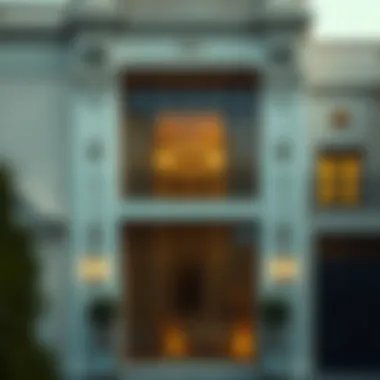

Dubai's architectural landscape serves as a fascinating testimony to human ingenuity and the relentless pursuit of the extraordinary. As a city that has transformed from a modest trading post to a global hub within a few decades, its skyline is laced with stunning structures that attract the eye and rouse the spirit. The significance of this topic lies not only in the aesthetic appeal but also in its implications for real estate investments, urban development, and cultural identity.
Understanding Dubai's architectural ethos can provide vital insights for investors, homeowners, and real estate professionals. The city’s distinctive blend of modernity and tradition encapsulates various stylistic elements that enhance property value while also shaping livability. In particular, the intertwining of lush green spaces with towering glass façades and culturally inspired designs speaks volumes about thoughtful urban planning. Moreover, the architectural marvels emerge as landmarks, influencing the spatial dynamics and economic prospects of the surrounding areas. Therefore, examining this landscape through a critical lens becomes essential for grasping the full scope of Dubai's real estate potential.
Historical Context of Dubai's Architecture
To appreciate the current architectural tapestry of Dubai, one must first consider its historical evolution. For centuries, Dubai was known primarily for its pearl diving and fishing economy, leaving little room for substantial architectural development. However, the discovery of oil in the 20th century catalyzed a rapid metamorphosis. Influences from Persian, Arab, and even Western styles began to permeate the aesthetic landscape, driven by a newfound wealth.
The traditional wind-tower structures, known as , showcased innovative methods for cooling buildings in arid climates. However, the architectural focus gradually shifted towards monumental skyscrapers and luxury hotels, with developers drawing inspiration from various parts of the globe.
This historical context illustrates how Dubai's identity continually evolves, reflected through its architectural choices. The harmonization of the past with the present lends a unique character to the city, enriching its appeal in the eyes of potential investors.
Contemporary Architectural Trends
In today's dynamic architectural scene, Dubai is often considered a playground for the avant-garde. The city embraces cutting-edge technologies and sustainable design practices, reflecting a commitment to a future that prioritizes environmental consciousness.
Some key contemporary trends include:
- Sustainability: Many new developments incorporate green building strategies, such as energy-efficient systems and eco-friendly materials. This shift indicates a growing awareness of climate change and ecological responsibility among developers.
- Smart Buildings: Implementing smart technology, such as automated heating and cooling, smart lighting, and security systems, enhances the living experience, making properties more desirable to tech-savvy buyers.
- Cultural Fusion: Architectural projects now increasingly embrace multicultural elements, blending the modern with the traditional. This creates spaces that resonate with both residents and visitors.
The embrace of these trends not only beautifies the city but also carries significant implications for investment. Properties that adhere to these focal points often yield higher market values and attract discerning buyers.
Iconic Structures and their Significance
Dubai is home to several iconic structures that have become synonymous with the city. Each architectural wonder tells a story, symbolizing progress, ambition, and cultural aspirations.
- Burj Khalifa: Standing as the tallest building in the world, the Burj Khalifa symbolizes Dubai's aspirations. Its stunning design curates a place where form meets function, and it elevates the surrounding property market.
- Burj Al Arab: With its sail-shaped silhouette, this luxury hotel has redefined what it means to be high-end lodging. It attracts high-net-worth individuals and sets a benchmark for hospitality architecture.
- Dubai Opera: This cultural hub not only adds aesthetic value but also enhances the city's cultural landscape, appealing to both tourists and residents alike.
The presence of iconic structures like these adds layers of meaning to Dubai's skyline, marking it as a global architectural leader and contributing significantly to the economic vibrancy of the region.
Through exploring these structures, one can grasp how they have shaped not just the physical landscape but also the character and perception of Dubai. Understanding their significance can guide investors in making informed decisions, ultimately impacting the real estate market for years to come.
Cultural Influences on Design
The aesthetic landscape of Dubai is a rich tapestry woven with threads of cultural influences. This part of the article looks deeply into how various cultures shape property design in Dubai. The benefits of understanding these influences cannot be overstated; they provide insights for investors and homeowners alike. The interplay between different cultural elements fosters unique designs that not only attract buyers but also enrich the fabric of real estate.
Embracing Multiculturalism
Dubai's position as a global hub encourages a vibrant exchange of ideas. Architects and designers in the region are often inspired by their diverse backgrounds as much as by the local environment. This multiculturalism is evident in numerous residential and commercial developments.
Take, for instance, the Dubai Marina, which integrates modernist styles with influences from Mediterranean architecture. The result is a stunning waterfront that showcases the beauty of diverse architectural elements in harmony. In essence, developers and homeowners can leverage this multicultural fabric to enhance the aesthetic value of properties, making them appealing not just locally, but also to international investors.
- Key Elements of Multicultural Design:
- Diverse architectural styles.
- A blend of materials and techniques.
- Vibrant designs that reflect various cultural heritages.
By tapping into this rich cultural reservoir, property developments can stand out in the market, thus enhancing their overall aesthetic appeal. Investors are encouraged to consider how these multicultural influences play a vital role in property value and market demand.
Fusion of Tradition and Modernity
The architectural narrative in Dubai frequently oscillates between age-old traditions and contemporary designs. This fusion not only honors the city’s heritage but also caters to the forward-thinking mindset of modern investors. Traditional elements—such as intricately carved wooden doors or mashrabiya screens—are often tastefully integrated into modern high-rises and villas.
For instance, the Burj Al Arab is a symbol of Dubai’s architectural prowess. Its sail-like structure captures the essence of maritime heritage while showcasing cutting-edge technology and luxury design. The balance of old and new in such iconic buildings serves to explain why many affluent buyers are drawn to property options that respect tradition while embracing modernity.
- Benefits of Fusing Tradition and Modernity:
- Attracts a broader audience.
- Enhances aesthetic value through unique design features.
- Contributes to cultural sustainability by preserving traditional elements.
Ultimately, the successful integration of traditional and modern aspects reveals much about Dubai’s identity as a forward-looking city grounded in rich cultural history. Investors who recognize this dynamic can find unique opportunities in the real estate landscape that appeal to both local and global markets.
"Cultural influences are not just a backdrop but an integral part of property design, driving aesthetic value in unexpected ways."
Understanding these nuances helps investors make informed decisions in an intricate market, ultimately leading to properties that are not only beautiful but also culturally resonant.
For further insights, consider exploring resources such as Wikipedia on Dubai's Architecture or Britannica's Overview of Dubai.
These insights and observations elucidate the importance of cultural influences on design, laying a solid foundation for the next steps in our exploration of Dubai's aesthetic landscape.
Urban Planning and Aesthetic Integration
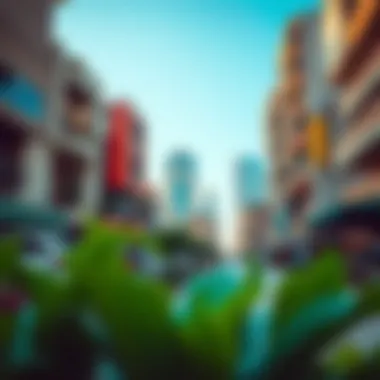
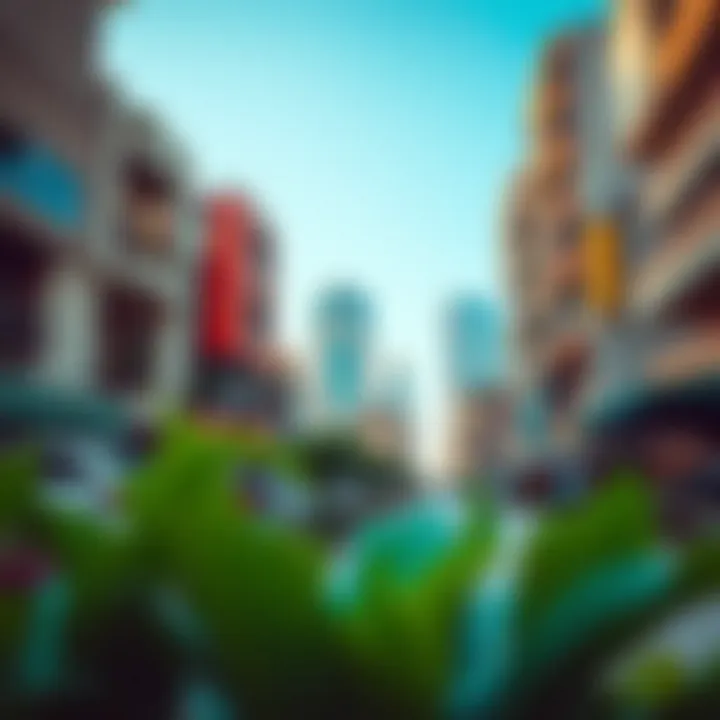
In Dubai, the marriage of urban planning and aesthetic integration acts like a well-crafted symphony, where each note corresponds to the design, functionality, and livability of the city. Urban planning goes beyond erecting buildings; it establishes a framework connecting people with space, culture, and nature. This integration is no small feat, especially in a city characterized by its rapid growth and innovation. The beauty of Dubai's skyline doesn’t materialize by chance; it arises from careful deliberations that encapsulate both form and function.
Key Elements and Benefits of Aesthetic Integration
Urban planning requires a meticulous balancing act. Here are some critical considerations:
- Harmony with Surroundings: Every new development must resonate with its environment. Skyscrapers should complement historic neighborhoods, reflecting both the heritage and forward-looking ethos of Dubai.
- Cohesive Vision: A well-planned urban layout fosters a unified aesthetic. Consider the way The Palm Jumeirah imitates a palm tree when seen from above; this stunning design reflects careful planning that marries aesthetics with functional urban living.
- Sustainability: Integrating green spaces not only beautifies cityscapes but also promotes mental well-being for residents. Parks, greenery, and water features enhance visual appeal while providing recreational spaces vital for community health.
- Accessibility and Flow: Good urban design considers how people move through spaces. If a commercial district is appealing, with thoughtful landscaping and pedestrian-friendly pathways, it encourages foot traffic and contributes positively to local economies.
The challenge for urban planners is to ensure these elements work hand in glove. After all, aesthetic considerations play a pivotal role in defining a locale's character and allure.
The Role of Urban Design in Aesthetic Appeal
Urban design serves as the bedrock for aesthetic integration, focusing on the big picture while addressing finer details. Imagine strolling through Downtown Dubai; the integration of wide boulevards, lush gardens, and community artworks creates an enchanting atmosphere. Urban design prioritizes:
- Visual Cohesion: Colors, materials, and architectural styles must work in harmony. Contrasting structures can create a jarring effect, while consistent themes can evoke a sense of tranquility.
- Cultural Reflection: Artistic installations and public art pieces infuse areas with cultural significance. For instance, the work of Emirati artists in parks not only beautifies but also tells local stories.
- User Experience: Urban design emphasizes creating spaces that invite interaction and engagement. Well-designed plazas, vibrant storefronts, and lively public areas invite residents and tourists alike to mingle, fostering a sense of community.
Consequently, successful urban design hinges on its ability to elicit emotional responses, making spaces both functional and beautiful.
Public Spaces and Their Impact
Public spaces weave the fabric of urban life, acting as gathering points that nurture social interaction and community engagement. A vibrant public domain showcases a city’s commitment to aesthetic integration and is critical for enhancing urban life in Dubai.
"Public spaces are more than just places; they shape the experiences and histories of communities."
Consider the Sheikh Mohammed Bin Rashid Boulevard, where cafes spill onto the streets, and pedestrians are treated to a feast of art and architecture. Some impacts of well-designed public spaces include:
- Fostering Community: These areas draw people together, creating opportunities for social connection and cultural exchange. The Dubai Marina Walk offers a scenic setting for families and friends, enhancing the community atmosphere.
- Enhancing Livability: Quality public spaces contribute to a higher quality of life. Access to parks and recreational areas promotes physical activity and mental health, appealing to families and health-conscious individuals alike.
- Economic Vitality: Attractive public spaces can increase property values and boost local businesses. Shops, restaurants, and service providers benefit from the increased foot traffic generated by well-designed social spaces.
Sustainable Aesthetics in Dubai
In a city like Dubai, where the skyline gleams with impressive high-rises and modern architectural marvels, the integration of sustainable aesthetics has become more than a trend—it’s a necessity. With the looming threat of climate change and an increasing global focus on environmental resilience, Dubai's approach to sustainability in real estate reflects a commitment to marrying beauty with responsibility. This section will explore the specific elements that comprise sustainable aesthetics, the benefits they bring, and the considerations that must be factored in as the landscape of Dubai continues to evolve.
Incorporating Green Design Principles
The heart of sustainable aesthetics in Dubai lies within green design principles. These principles pivot around minimizing the ecological footprint of buildings while ensuring they remain visually stunning and functional. From the use of energy-efficient materials to innovative solar designs, these principles weave together utility and aesthetics seamlessly.
- Use of Natural Materials: Architects are now favoring materials such as bamboo, reclaimed wood, and other sustainable resources that not only reduce carbon emissions but also provide natural beauty and warmth to spaces.
- Passive Design Techniques: This involves strategic placements of windows and walls that allow natural light to flood in, reducing the need for artificial lighting throughout the day. Not only does this save energy, but it also creates inviting, airy atmospheres that enhance a property's aesthetic appeal.
- Green Roofs and Vertical Gardens: Many new developments in Dubai are embracing the idea of green roofs and vertical gardens. These elements not only promote biodiversity by providing habitats for flora and fauna but also contribute significantly to the aesthetics of urban areas, allowing for lush greenery in a typically desert landscape.
- Water Efficiency: Integrating water-saving devices and designing landscapes that require less irrigation are crucial steps. This not only ensures that there’s plenty of green without depleting water resources but also adds a layer of serenity and nature that homeowners seek.
Incorporating these green design principles requires thoughtful planning and execution. However, the payoff is substantial, as it not only elevates the visual appeal of a property but also enhances its value and marketability to eco-conscious buyers.
The Future of Sustainable Architecture
Looking ahead, the future of sustainable architecture in Dubai appears bright. As the city continues to grow, so does the demand for structures that are not only eye-catching but also environmentally friendly.
"Sustainability will play a crucial role in the future of Dubai's architectural landscape, ensuring that aesthetic appeal does not come at the cost of our planet."
- Innovative Technologies: Advancement in building materials—like self-healing concrete and smart glass—paves the way for sleek designs that can adapt to environmental changes. Smart technology will soon play an integral role, automating energy management and optimizing space use while keeping aesthetics in check.
- Community-Centric Designs: Future developments may lean towards designs that enhance social interactions among residents, such as shared communal spaces adorned with local art and greenery. This fosters a sense of community while beautifying the urban landscape.
- Eco-Friendly Regulations: The government’s push for stricter green building regulations serves a dual purpose. It holds developers accountable for sustainability and encourages innovative approaches to aesthetic design. Processes like obtaining LEED certifications are set to boost market competitiveness for properties that emphasize sustainability.
- Global Collaboration: As Dubai becomes increasingly international in its appeal, foreign architects and developers bring diverse perspectives on sustainability. This cross-pollination of ideas will undoubtedly lead to new trends that blend aesthetic design with sustainable practices, enriching Dubai’s unique architectural identity.
Investment Potential in Aesthetically Pleasing Properties
In the intricate world of real estate, aesthetics are more than just a visual treat; they play a pivotal role in determining the investment potential of properties. When it comes to Dubai, where the skyline is a mosaic of innovative designs, understanding the aesthetic appeal can yield substantial insights for investors and buyers alike. Properties that are not only functional but also visually captivating often attract higher market prices and can offer a lucrative return on investment.
One major aspect to consider is the psychological appeal of attractive properties. Humans are naturally drawn to beauty. A well-designed property can evoke feelings of luxury and success, which can translate into demand that propels prices upward. This means that aesthetically pleasing properties in sought-after neighborhoods become hotcakes in the market, often leading to competitive bidding and fast transactions.
Furthermore, many potential buyers are on the lookout for homes that reflect their personal taste and social status. They might prioritize factors like artistic design, unique architectural elements, and harmonious integration with nature. Such preferences emphasize the importance of aesthetically pleasing properties, positioning them as ideal investments amid the backdrop of a growing urban environment.
Market Trends and Aesthetic Value
A close observation of the real estate landscape in Dubai reveals a consistent trend: the increasing demand for aesthetically appealing properties. As urban living evolves, the expectation for integrated beauty in residential and commercial spaces has become a standard rather than an exception. Investors looking to maximize their returns need to take note of several market trends:
- Condos and High-Rises: Stylish and modern condo buildings with innovative designs are popping up, attracting both locals and expatriates. These developments often feature amenities that enhance aesthetic experiences, such as rooftop gardens and artistic installations.
- Sustainable Designs: There is a growing inclination toward eco-friendly properties that also fulfill aesthetic criteria. Buildings that blend sustainability with beauty are marketed as cutting-edge and can command higher prices.
- Cultural Influences: The unique blend of cultures in Dubai influences architectural styles. Properties that showcase local heritage while embracing contemporary aesthetics tend to gain traction, appealing to both international investors and culturally-aware buyers.
Properties that are visually captivating often lead to higher demand and competitive pricing in the real estate market.
Assessing Property Value through Aesthetic Appeal
Evaluating a property's value through its aesthetic appeal is a multifaceted affair. Investors need to consider several criteria:
- Architectural Integrity: The structural soundness paired with a striking design can elevate property values. Iconic buildings often appreciate faster due to their uniqueness.
- Quality of Materials: High-end finishes not only add to the beauty but also contribute to the durability of the property. Investors should look for the use of superior materials like natural stone, wood, and artistic elements.
- Surrounding Environment: The aesthetics of the location play a crucial role in property valuation. Areas that boast parks, artistic installations, and visually-engaging surroundings often see properties valued more favorably.
- Market Comparisons: When placing aesthetic value on a property, comparative market analysis is essential. Congruent sales of aesthetically appealing properties can serve as a benchmark for determining the potential value of a new listing.
- End-user Demand: Ultimately, the desires of potential buyers dictate value. Properties that resonate with aesthetic preferences will fare better in the market, creating a stark divide between plain and picturesque.
Case Studies: Aesthetic Properties in Dubai
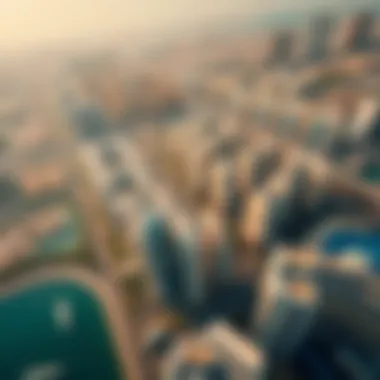
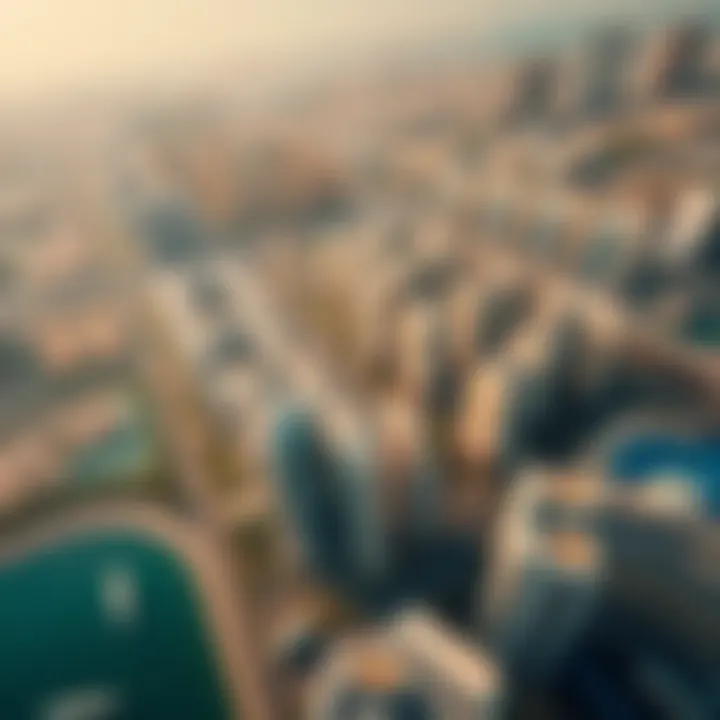
Understanding case studies within Dubai's real estate landscape offers a critical perspective on how aesthetic considerations can influence property values and desirability. Dubai, as a microcosm of architectural innovation and cultural fusion, presents an array of properties that not only satisfy transactional needs but also speak to artistic sensibilities. By examining select case studies, investors, homeowners, and real estate professionals can uncover vital insights about the interplay of design, function, and market allure.
Luxury Developments and Their Design Philosophy
Among the showcase of luxury developments in Dubai, the Burj Khalifa stands out as a beacon of modern architecture. Its sleek form, designed by Skidmore, Owings & Merrill, reflects a blend of aesthetics with practicality. Here, the design philosophy is to create an iconic structure that not only dominates the skyline but also embeds itself within the cultural narrative of Dubai. The Burj Khalifa towers over the city, and its stature elevates it beyond merely a residential or commercial space; it has become an experience.
In similar fashion, the Palm Jumeirah, a marvel of engineering, illustrates the innovative use of aesthetics in luxury living. Its design, influenced by palm tree fronds, offers residents both views of the Arabian Gulf and a sense of exclusivity as they reside on one of the world’s largest artificial islands. Each villa blends seamlessly with the surrounding environment, marrying opulence with the beauty of nature.
As the saying goes, *
The Role of Art in Real Estate Aesthetics
Art has always played a vital role in the formation of culture and community, and its impact becomes even more pronounced within the realm of real estate aesthetics. For many properties in Dubai, art isn't simply an accessory; it’s woven into the fabric of their identity. When examining the aesthetic landscape of Dubai’s real estate, we uncover layers where art installations and design philosophy coalesce. The marriage of art and property development not only enhances the visual appeal but also fosters a deeper connection between inhabitants and their surroundings. Such developments elevate mundane spaces into extraordinary experiences, instilling a sense of identity and belonging in the residents while simultaneously attracting potential buyers and investors.
Art Installations within Property Developments
When developers incorporate art installations into property developments, they transform ordinary environments into dynamic spaces. Consider, for instance, the Waterfront Promenade at Dubai Marina. This area showcases a series of stunning sculptures, reflecting local history and culture. These installations are not merely for eye candy; they invite dialogue and interaction, creating a vibrant atmosphere enhancing residents' experience. Potential buyers are often drawn to properties characterized by unique art offerings, as these elements can vastly increase the perceived value of the property.
Moreover, art installations serve as a cultural narrative. They’re not just embellishments but tell stories—of the land, the people, and the vision behind the development. On a practical level, such artwork can also mitigate noise and improve the visual quality of public spaces, presenting art as a multifunctional aspect of urban design.
Collaborations between Artists and Developers
The synergy achieved through collaborations between artists and developers can yield remarkable outcomes. When architects and artists team up, the outcomes often defy conventional design expectations. Such partnerships encourage innovative ideas while ensuring that the artistic vision remains informed by practical real estate considerations. A prominent example would be the collaboration behind the remarkable Sky Gardens in Dubai’s financial district, where green spaces intertwine with artistic installations, merging nature and creativity.
Working with local artists not only emphasizes authenticity but also cultivates a sense of community ownership towards these spaces. In many instances, developers recruit artists to create bespoke pieces tailored to the environment, enhancing both the aesthetic and emotional value of the property. Such collaboration fosters a more sustainable approach to development, showcasing the cultural richness of Dubai while simultaneously enhancing the property's marketability.
Embracing artistic contributions in real estate designs doesn’t merely heighten aesthetic appeal; it challenges conventional property norms and promotes a holistic approach to urban environments. Therefore, as the Dubai landscape continues to evolve, one can expect that the synthesis of art and architecture will remain a cornerstone of its allure, not just for prospective homebuyers but also for investors who perceive the intrinsic value in this fusion.
Future Directions in Aesthetic Real Estate
As the real estate landscape continues to evolve, it becomes crucial to investigate the future directions in aesthetic real estate, particularly in a vibrant city like Dubai. The aesthetics of properties impact not just their visual appeal but also their market value and functionality.
The integration of innovative design philosophies and sustainable practices positions the market to attract discerning buyers and investors. Understanding these future directions allows stakeholders to stay ahead of trends, ensuring their investments align with the preferences of an increasingly sophisticated clientele.
Emerging Trends in Property Design
Recently, the design landscape has shifted significantly. Modern architecture in Dubai increasingly reflects cultural narratives and environmental awareness. Key emerging trends include:
- Biophilic design: Infusing natural elements into urban settings is gaining traction. This approach not only enhances aesthetic appeal but also promotes well-being among residents. For instance, developments with integrated parks or vertical gardens signal a strong shift towards balancing urban living with nature.
- Modular and adaptive design: Properties are now being designed to be flexible and adaptable. This allows for modifications based on changes in resident needs or environmental conditions, efficiently maximizing space use while remaining visually appealing.
- Cultural sustainability: The aesthetic dialogue has shifted towards preserving cultural heritages while introducing modern influences, creating a rich tapestry of architectural styles that resonate with both long-time residents and newcomers.
These trends suggest a future where beauty and utility coalesce, thus enhancing the desirability of real estate in Dubai.
Technological Innovations in Aesthetics
As we move deeper into the digital age, technology plays a pivotal role in shaping the aesthetics of real estate. New tech-driven tools and techniques allow developers to push the boundaries of traditional design. Notable innovations include:
- 3D visualization: This technology allows architects to create stunning visual representations before the physical structures are built. By employing algorithms, developers can brainstorm and iterate designs quickly, bringing more creativity to aesthetic aspects.
- Smart home integration: Modern residences are now equipped with smart home technologies that enhance both functionality and aesthetic appeal. Properties that seamlessly blend technology with design elements attract tech-savvy buyers willing to invest for the added convenience and modern flair.
- Sustainable materials: Increased awareness and demand for sustainability have led to the development and use of eco-friendly materials. Properties designed with these materials not only appeal visually but also promote an environmentally responsible lifestyle.
The marriage of technology and aesthetics in real estate paints a promising picture for future developments in Dubai, pushing the envelope further for design creativity while ensuring functional and environmental considerations are met.
"In the world of property, beauty isn't just skin deep; it's an investment in the future of living."
Embracing these emerging trends and technological innovations enables investors and homeowners alike to navigate Dubai’s real estate market effectively, ensuring that their investments not only hold aesthetic value but also promise enduring appeal.
Ending: Reflecting on Aesthetic Considerations
In evaluating Dubai's real estate market, aesthetic considerations emerge as pivotal elements influencing both buyer preferences and investment viability. The intricate tapestry of architectural styles, urban planning, and cultural narratives intertwines to form a unique identity, resonating deeply with stakeholders in the property sector. Recognizing and embracing these aesthetic dimensions is not merely an exercise in appreciation but a strategic necessity for anyone operating within this vibrant market.
The aesthetic appeal of a property greatly enhances its desirability, leading to increased demand. Investors who take aesthetics seriously often find themselves at a distinct advantage, as properties that stand out visually tend to command higher market values. Here are some key aspects underscoring the importance of aesthetics in this context:
- Emotional Connection: Properties that evoke a strong emotional response often lead to swifter sales and greater satisfaction among homeowners.
- Market Differentiation: A well-designed space can set a property apart from the competition, which is particularly important in a saturated market like Dubai.
- Long-term Value: Aesthetic value contributes to the longevity of a property’s appeal, sustaining its worth even in shifting market conditions.
Synthesizing Aesthetic Insights for Investors
For investors, synthesizing aesthetic insights is crucial in making informed decisions. By examining both current trends and timeless elements of design, they can characterize opportunities that align with aesthetic appeal. Market analysis often includes factors like color schemes, material choices, and the integration of nature within design to determine potential profitability. For instance, more buyers are gravitating towards properties that blend seamlessly with the surrounding environment while reflecting contemporary design principles, thereby creating a demand that investors can capitalize on.
Engaging with aesthetic principles doesn’t stop at simply identifying properties. Investors can benefit from understanding how certain features resonate with buyers or renters. Understanding what makes a space visually appealing helps in tailoring marketing strategies that resonate with target demographics.
The Lasting Impact of Aesthetics in Dubai's Real Estate
The impact of aesthetics extends far beyond immediate property value; it shapes the community and culture within Dubai itself. The city's architectural beauty fosters a sense of pride among residents while creating an inviting atmosphere for visitors. Moreover, as a city that has rapidly evolved, evolving aesthetic preferences reflect changing societal values and aspirations.
A well-thought-out approach to aesthetics can catalyze urban regeneration, breathing new life into neglected areas and encouraging diversity in neighborhoods. Art installations, parks, and thoughtful green spaces contribute to the overall quality of life in these areas, making them more desirable places to live and work. Attention to aesthetics does not only influence properties on an individual level but also enhances the urban experience in Dubai as a whole.
Thus, recognizing the aesthetic landscape is paramount for understanding the opportunities within this unique market. Investors equipped with this knowledge will find their decisions resonate more profoundly within both the real estate market and the broader cultural narrative of Dubai, ensuring a lasting impact on their investment journeys.











